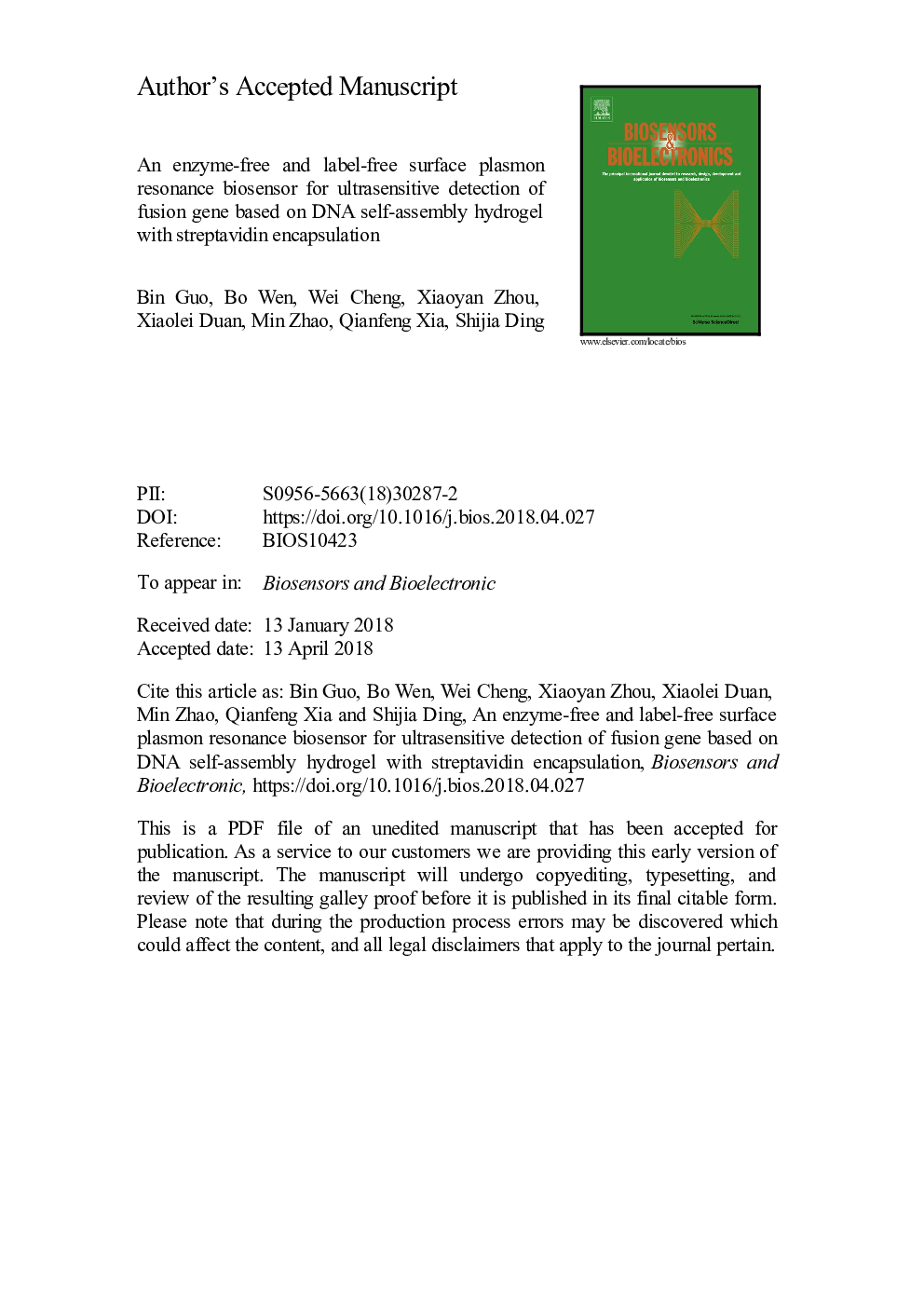| Article ID | Journal | Published Year | Pages | File Type |
|---|---|---|---|---|
| 7229276 | Biosensors and Bioelectronics | 2018 | 20 Pages |
Abstract
In this research, an enzyme-free and label-free surface plasmon resonance (SPR) biosensing strategy has been developed for ultrasensitive detection of fusion gene based on the heterogeneous target-triggered DNA self-assembly aptamer-based hydrogel with streptavidin (SA) encapsulation. In the presence of target, the capture probes (Cp) immobilized on the chip surface can capture the PML/RARα, forming a Cp-PML/RARα duplex. After that, the aptamer-based network hydrogel nanostructure is formed on the gold surface via target-triggered self-assembly of X shaped polymers. Subsequently, the SA can be encapsulated into hydrogel by the specific binding of SA aptamer, forming the complex with super molecular weight. Thus, the developed strategy achieves dramatic enhancement of the SPR signal. Using PML/RARα “S” subtype as model analyte, the developed biosensing method can detect target down to 45.22â¯fM with a wide linear range from 100â¯fM to 10â¯nM. Moreover, the high efficiency biosensing method shows excellent practical ability to identify the clinical PCR products of PML/RARα. Thus, this proposed strategy presents a powerful platform for ultrasensitive detection of fusion gene and early diagnosis and monitoring of disease.
Related Topics
Physical Sciences and Engineering
Chemistry
Analytical Chemistry
Authors
Bin Guo, Bo Wen, Wei Cheng, Xiaoyan Zhou, Xiaolei Duan, Min Zhao, Qianfeng Xia, Shijia Ding,
